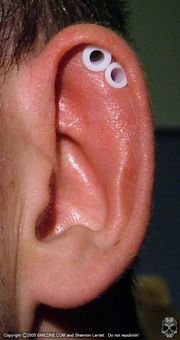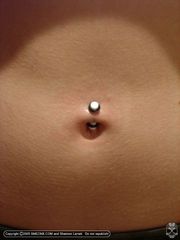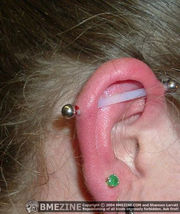PTFE
PTFE (polytetrafluoroethylene), is an extremely inert plastic used for jewelry and implants as it is resistant to body chemicals. It is suitable for autoclaving, so it can safely be used in fresh piercings. Along with silicone, PTFE has become the material of choice for implant artists. One of PTFE's features is that it has the lowest coefficient of friction of any known solid material. PTFE is also flexible, allowing it to move slightly with the body when used in piercings.
Polytetrafluoroethylene is also known by the trade-name of Teflon, which is a trademark of the DuPont company.
The chemical make-up of polytetrafluoroethylene is made of a carbon backbone chain, with each carbon atom having two fluorine atoms attached to it.
PTFE is most commonly used to make plugs, tunnels, and flexible small-gauge barbells. It may also be used to make tape, larger barbells and other body jewelry. It is also sometimes used in stretching piercings (i.e. Taping).


